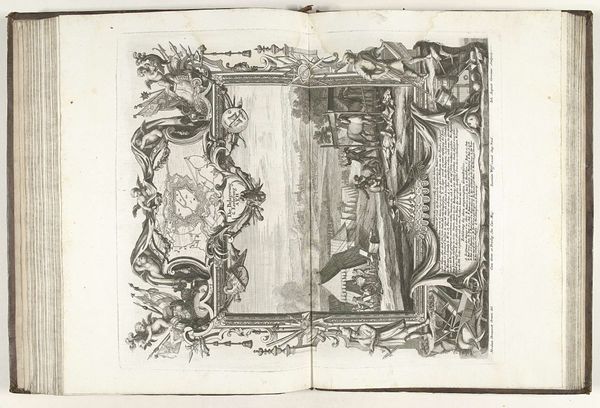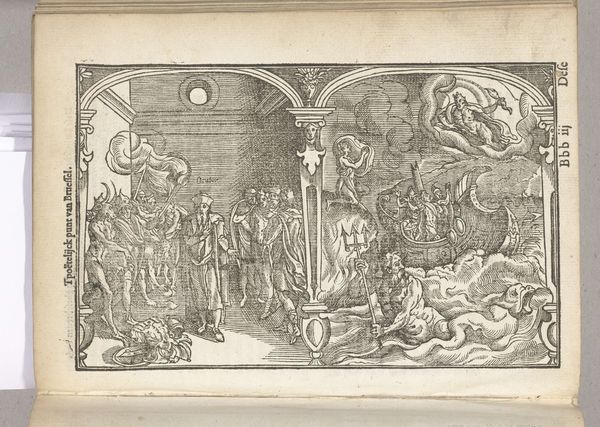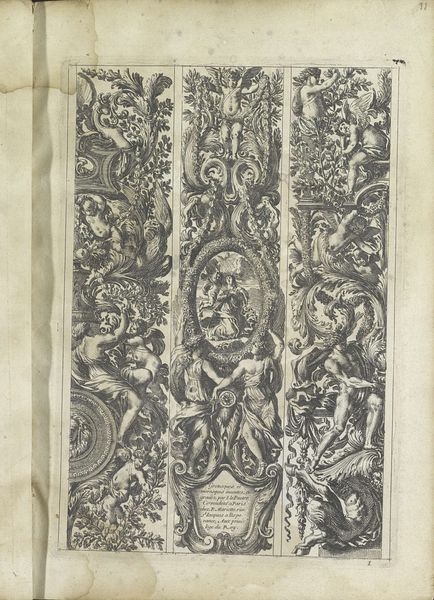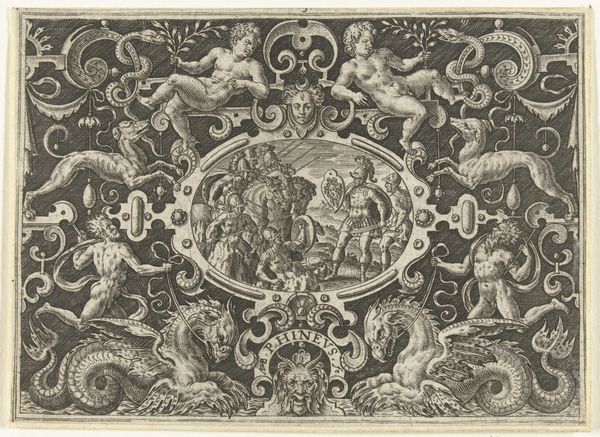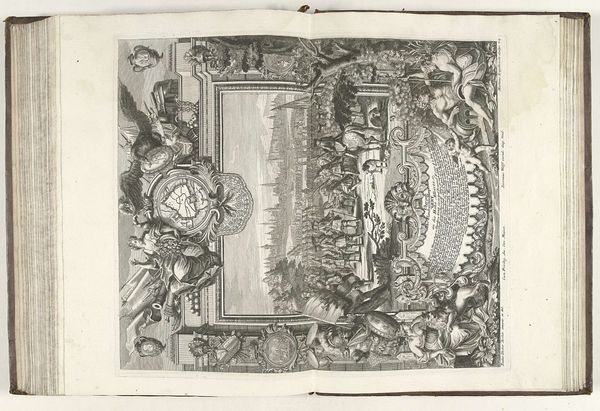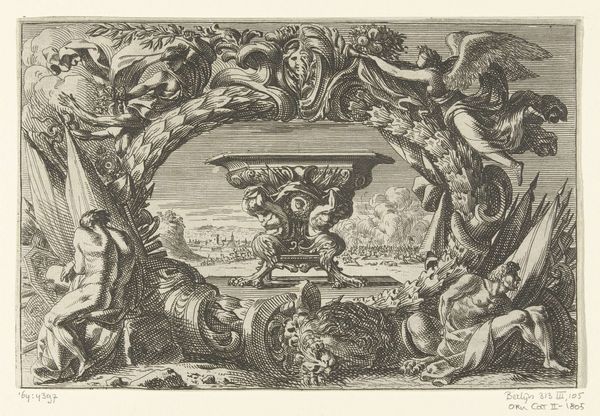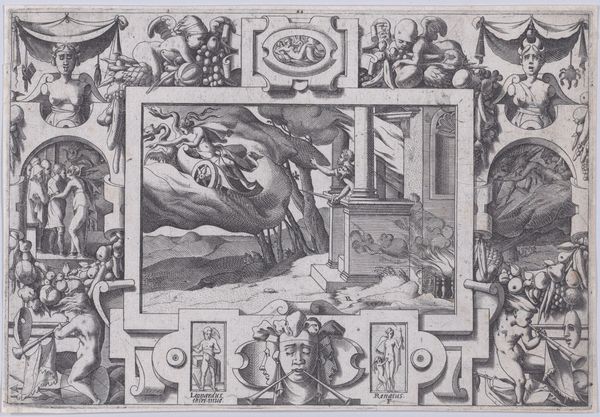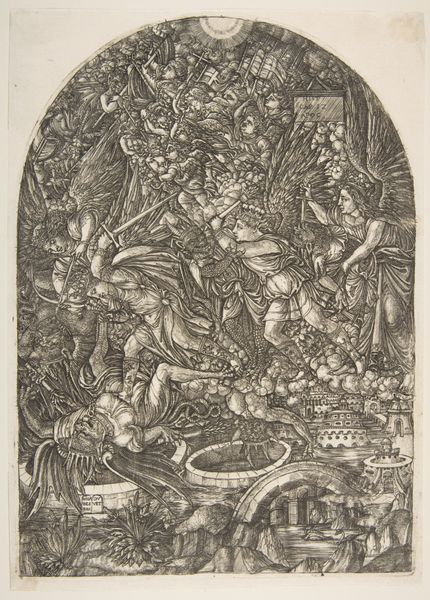
Allegorie ter ere van keizer Karel VI bij de vrede van Rastatt, 1714 1714 - 1715
0:00
0:00
print, engraving
#
ink drawing
#
allegory
#
baroque
#
pen drawing
# print
#
pen sketch
#
history-painting
#
engraving
Dimensions: height 483 mm, width 396 mm
Copyright: Rijks Museum: Open Domain
This allegorical print, made in 1714 by an anonymous Dutch artist, commemorates the Treaty of Rastatt, celebrating Emperor Charles VI. Occasioned by the end of the War of the Spanish Succession, allegories like this served to validate and solidify the ruler’s power. The elaborate imagery, from the putti to the imperial regalia, reinforces Charles's authority and divine right. In the Dutch Republic, prints like these played a crucial role in shaping public opinion. They were displayed in homes and public spaces, and were instruments of political propaganda, especially given the complex dynamics between the Dutch Republic and the Habsburg Empire. Exploring period pamphlets, news-sheets, and other visual media can give us insight into how this print functioned within its original context. By looking at it through a social and institutional lens, we can better grasp its historical importance.
Comments
No comments
Be the first to comment and join the conversation on the ultimate creative platform.


